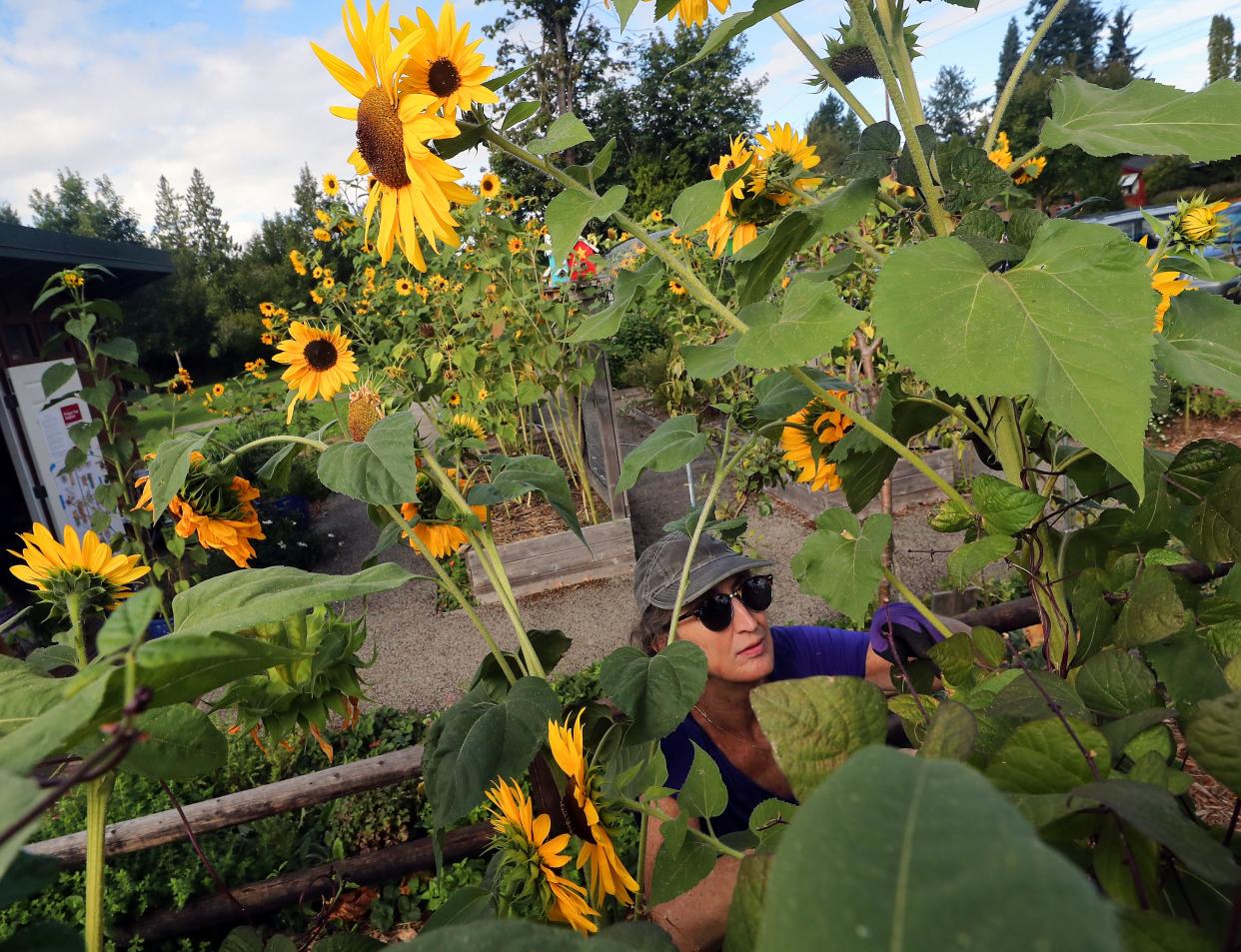September's here, which means a second-wind season for gardeners

As autumn’s approach moderates lingering summer heat, our gardens gain a burst of second wind energy. Perennials that were looking battered are perking up again, with new growth appearing at the base. Some even boast a few belated bloom stalks, small but determined to have their moment. As pollinators pursue pollen, they transfer that golden treasure from plant to plant as well as off to their own homes. Second wind pollinators know that summer is passing and time is short; wherever blossoms linger, they’ll be abuzz with visitors, from honeybees to hummingbirds.
Blooming is important to plants, not so much because it’s pretty as because it provides a chance to exchange genetic material. Each tiny pollen grain is a multicellular organism that’s genetically distinct from its parent plant. Like siblings everywhere, different pollen grains from a flower can feature diverse traits and characteristics. One such characteristic is the ability to trigger allergies, making those extra face masks awesome for reducing pollen symptoms(!). As well, with fennel pollen selling for around $300 a pound in fancy food shops, just tip laden blossoms over an envelope, tap gently and you’l glean plenty to share with foodie friends.
Though summer is waning, autumnal rains are still a long way off and careful watering is the key to keeping gardens healthy and productive. If that’s not a concern, it’s fine to let them lapse into early dormancy (especially lawns). However, given recent dry seasons, neglected plants (notably young trees and new shrubs) that rely on summer water may not make it back next spring. Again, that may be an acceptable loss, but if not, keep on watering until rain moistens the top foot of soil. As harvest empties vegetable beds, water thoroughly, scatter on granulated humic acid, and layer on a few inches of mature compost to replenish soil nutrients. Water well again before planting cool season crops such as kale, endive, mustard greens, and spinach. Beets, carrots and even radishes are often good fall performers, and a late crop of snow peas can keep on producing into November in a mild year.
Edible beds that will be fallow all winter can be refreshed with a cover crop of field peas, fava beans, or annual clover, all of which improve soil quality and add captured nitrogen to the soil. Though not nitrogen builders, buckwheat, oats, and rye are quick cover crops that can be weed whacked and forked under in late winter to nourish weary soil. For additional protection from wind and water erosion, top beds off with a layer of shredded tree waste (wood chips, not bark).
A gentle tidy is all most gardens need now, as autumn has barely begun. Remove dead plants and dying foliage, but leave at least a few seed heads for the birds, who will also strip the garden of pesky bugs for you. (Chickadees, wrens, and warblers especially like aphids and whitefly). It’s a good time to gather seeds from annuals and perennials, a task children often find fascinating. When seeds are well ripened, the pods will be brown or grey and dry to the touch and you’ll hear the seeds rattle around if you shake the pods. Pods that are still green aren’t ready for harvest yet so leave them in place (green seeds won’t finish ripening if the stems are picked too soon). Learning to tell when seeds are ready for harvest involves looking, feeling, and listening, all things kids are good at. Identifying seedpods also teaches children about natural cycles, from flowers to seeds to plants to flowers again. Onward, right?
Contact Ann Lovejoy at 413 Madrona Way NE, Bainbridge Island, WA 98110 or visit Ann’s blog at http://www.loghouseplants.com/blogs/greengardening/ and leave a question/comment.
This article originally appeared on Kitsap Sun: Second wind season in the garden

